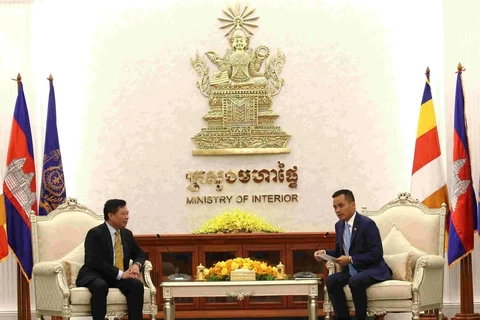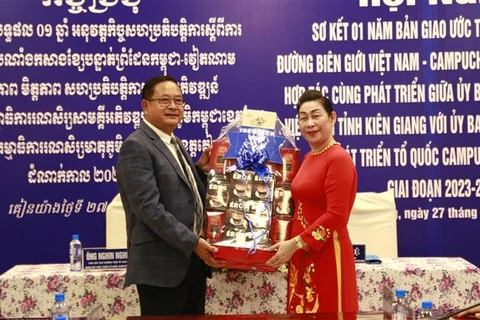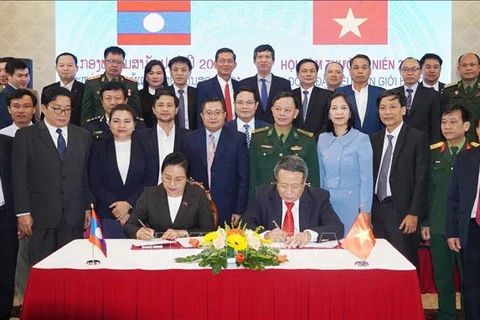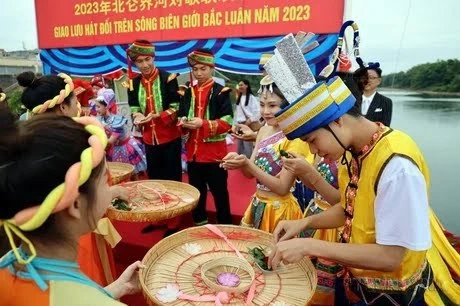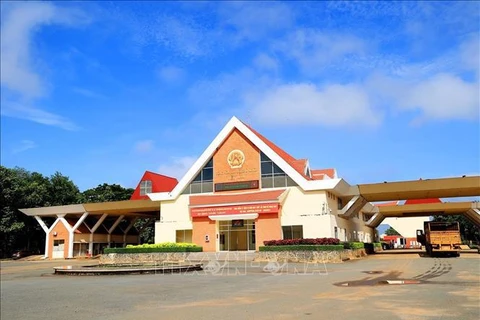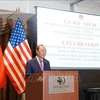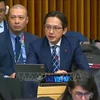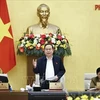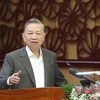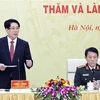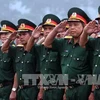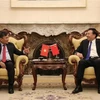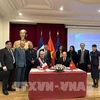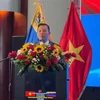 At the conference on reviewing and guiding the implementation of land border gate planning held in Hanoi on April 8. (Photo: Ministry of Foreign Affairs)
At the conference on reviewing and guiding the implementation of land border gate planning held in Hanoi on April 8. (Photo: Ministry of Foreign Affairs) Hanoi (VNA) – The focus of border management and protection between Vietnam and neighbouring countries has shifted from demarcation to cooperation for development, Minister of Foreign Affairs Bui Thanh Son has said.
In his concluding statement delivered at a conference on reviewing and guiding the implementation of land border gate planning held in Hanoi on April 8, Son noted it is crucial to seize collaboration opportunities to promote development in border areas.
The minister also highlighted a need to leverage the role of border gates by enhancing harmonious connectivity of road and railway systems with China’s border provinces and inland regions, the ASEAN region, and Central Asian countries.
The conference was attended by representatives of several ministries and leaders of 25 provinces bordering China, Laos, and Cambodia on land.
 A vehicle passing through the Mong Cai (Vietnam) - Dongxing (China) border gate at the Bac Luan II bridge area. (Photo: VNA) At the conference, Deputy Minister of Foreign Affairs Ha Kim Ngoc said since 2020, the ministry has coordinated with relevant ministries, sectors, and localities to conduct research and build border gate planning along the entire land border.
A vehicle passing through the Mong Cai (Vietnam) - Dongxing (China) border gate at the Bac Luan II bridge area. (Photo: VNA) At the conference, Deputy Minister of Foreign Affairs Ha Kim Ngoc said since 2020, the ministry has coordinated with relevant ministries, sectors, and localities to conduct research and build border gate planning along the entire land border.
According to him, the plans, approved by the Prime Minister, play a role in guiding the development roadmap in the medium term by 2030, with a long-term vision towards 2050 and beyond. They provide an important internal legal framework for investment serving border infrastructure development, standardise and modernise border gate systems in a sustainable manner, and gradually develop digital and smart ones.
Participants delved into discussions on the opening and upgrading of border gates at the local level, as well as the advantages and difficulties in the implementation of border gate planning.
They said it is essential to prioritise the sequence of border gates mentioned in the plans and coordinate real-time exchanges for consensus with Chinese, Lao, and Cambodian counterparts./.
In his concluding statement delivered at a conference on reviewing and guiding the implementation of land border gate planning held in Hanoi on April 8, Son noted it is crucial to seize collaboration opportunities to promote development in border areas.
The minister also highlighted a need to leverage the role of border gates by enhancing harmonious connectivity of road and railway systems with China’s border provinces and inland regions, the ASEAN region, and Central Asian countries.
The conference was attended by representatives of several ministries and leaders of 25 provinces bordering China, Laos, and Cambodia on land.
 A vehicle passing through the Mong Cai (Vietnam) - Dongxing (China) border gate at the Bac Luan II bridge area. (Photo: VNA)
A vehicle passing through the Mong Cai (Vietnam) - Dongxing (China) border gate at the Bac Luan II bridge area. (Photo: VNA) According to him, the plans, approved by the Prime Minister, play a role in guiding the development roadmap in the medium term by 2030, with a long-term vision towards 2050 and beyond. They provide an important internal legal framework for investment serving border infrastructure development, standardise and modernise border gate systems in a sustainable manner, and gradually develop digital and smart ones.
Participants delved into discussions on the opening and upgrading of border gates at the local level, as well as the advantages and difficulties in the implementation of border gate planning.
They said it is essential to prioritise the sequence of border gates mentioned in the plans and coordinate real-time exchanges for consensus with Chinese, Lao, and Cambodian counterparts./.
VNA
